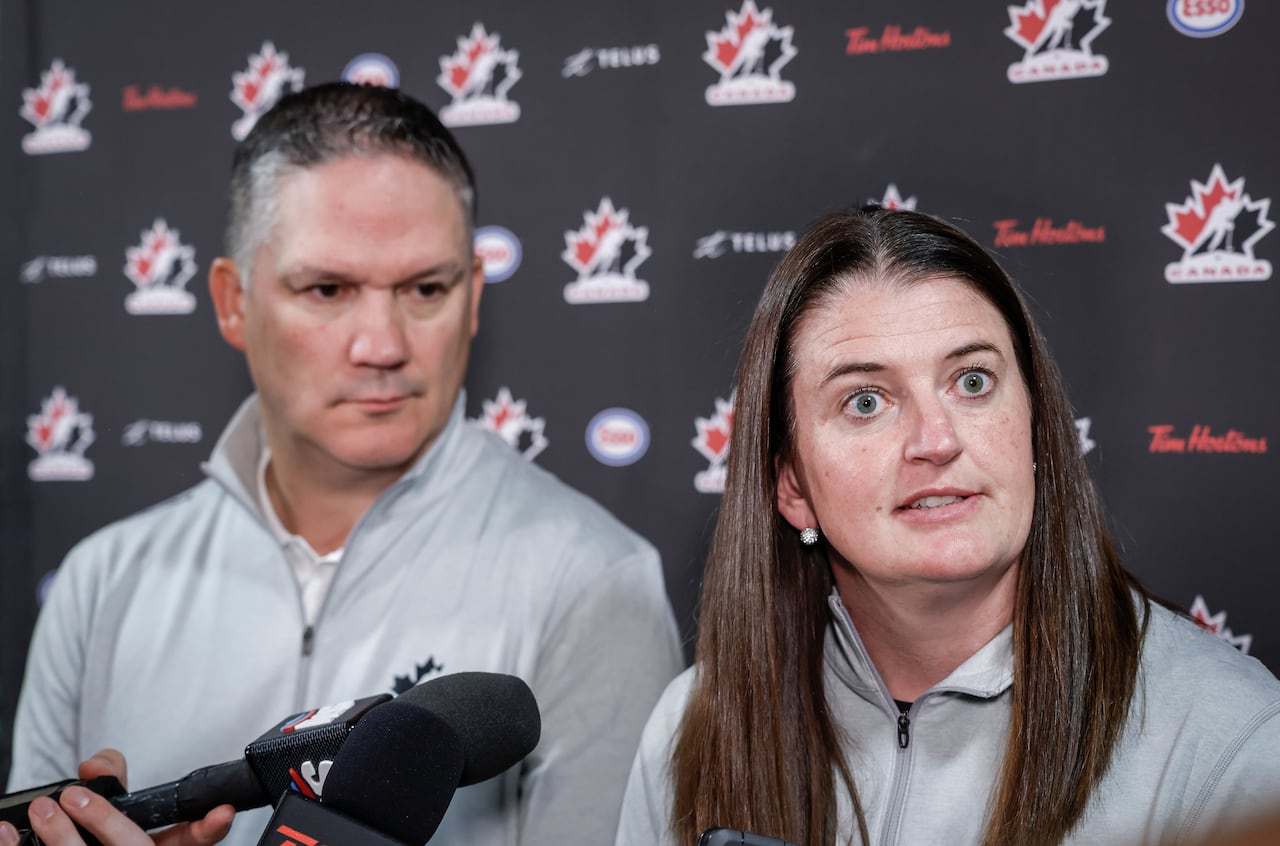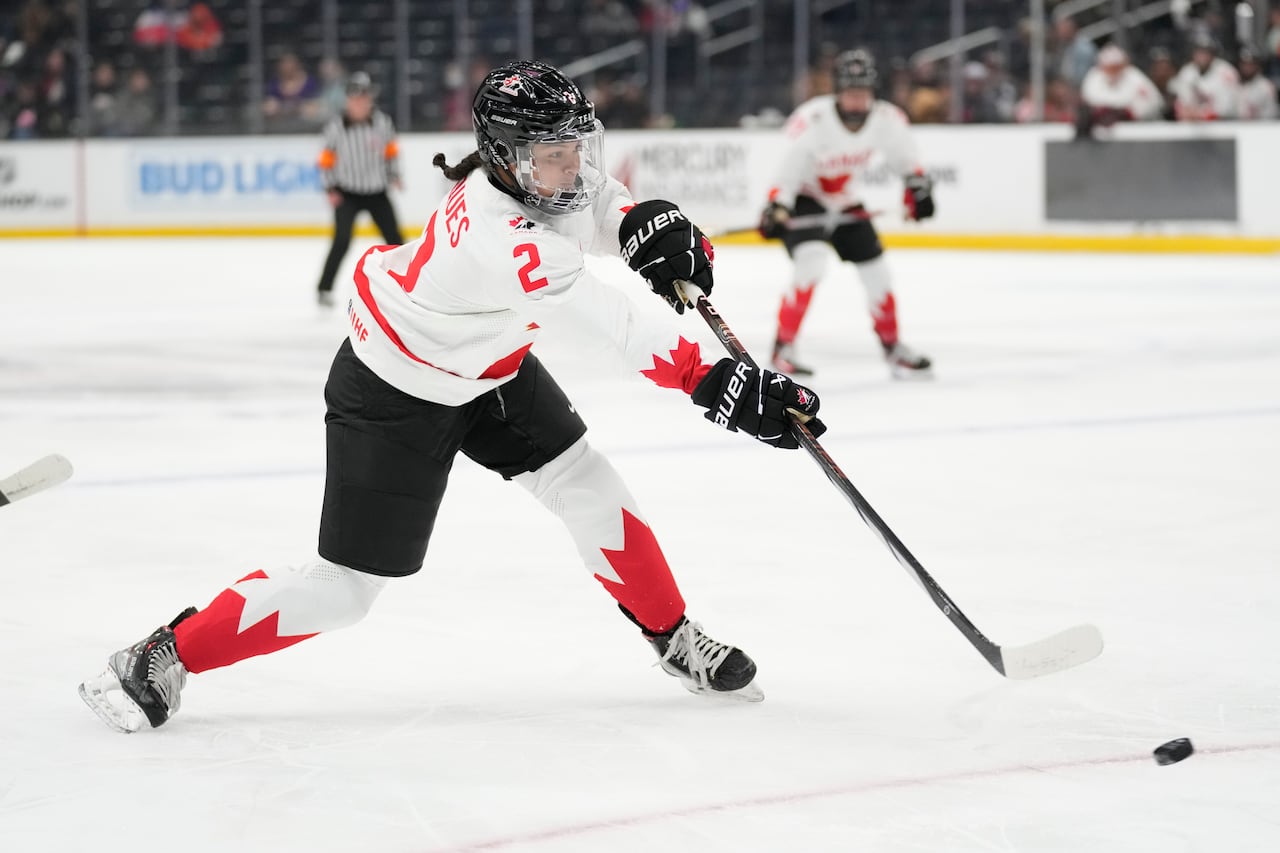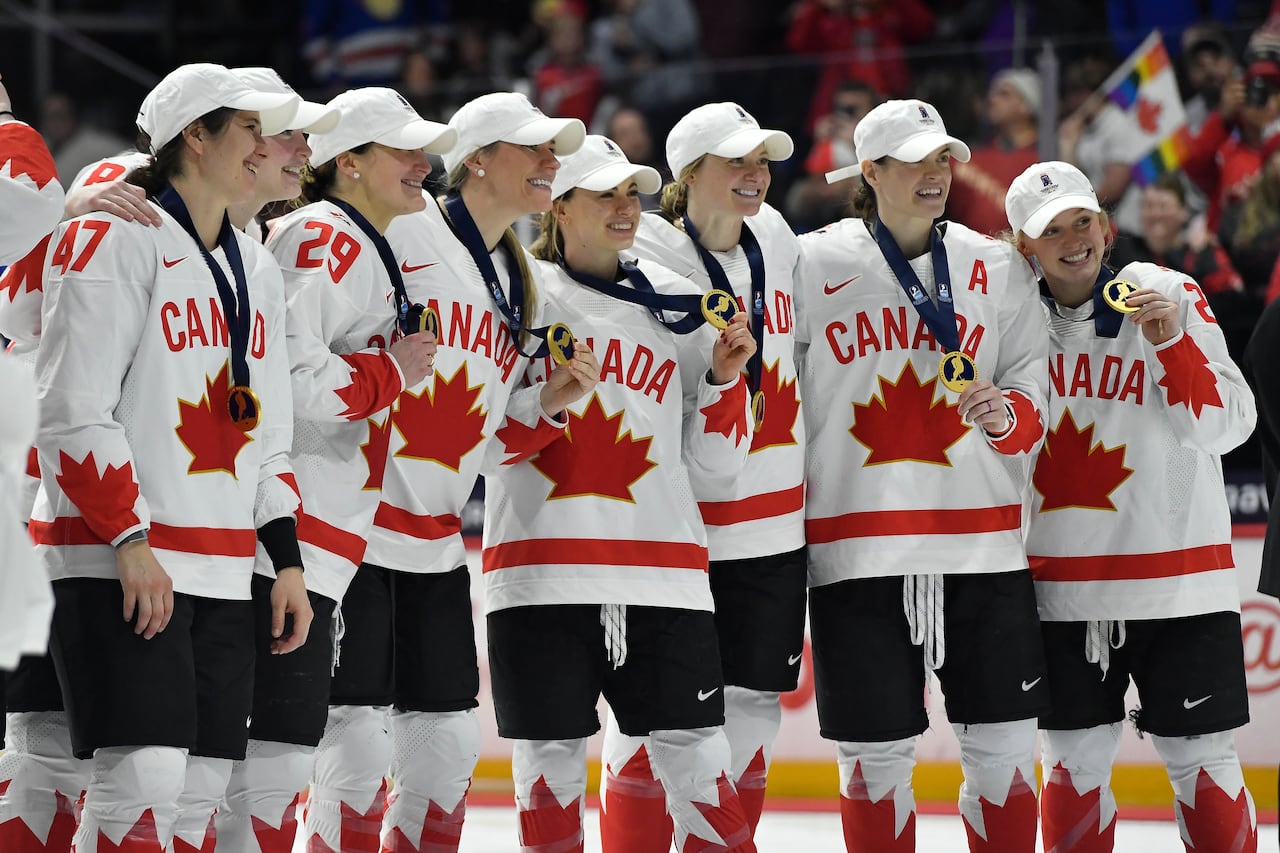Tough roster decisions coming for Canadian women’s Olympic hockey team

The PWHL season doesn’t begin until Nov. 21, but the competition among the women looking to make the Canadian Olympic hockey team is in full swing.
Two of three training blocks for the Olympic team are now in the books, after camp wrapped in Toronto at the end of last week.
The final training block begins at the end of this month in Montreal. It will be followed by just four games together as a team in the shortened Canada-U.S. Rivalry Series: two in the U.S. (in Cleveland on Nov. 6 and Buffalo, N.Y. on Nov. 8) and two in Edmonton (on Dec. 10 and 13).
“We’ve been pleasantly happy and surprised with how everyone has come to compete for a spot,” general manager Gina Kingsbury told CBC Sports on Friday, after the Toronto camp ended. “I think we’ve got the right group here in place.”
Thirty players have been in camp but only 23 players will wear the Maple Leaf in Italy when the Winter Olympics begin in February. That leaves difficult decisions ahead for Kingsbury, head coach Troy Ryan and the rest of the staff.
More than half the players at Olympic camp (17) are veterans who won Olympic gold in Beijing in 2022. The Canadian management must decide how much to balance veteran experience with up-and-coming players who are likely to lead this team into the 2030 Olympics and beyond.

One of those players is 19-year-old Caitlin Kraemer, who passed Marie-Philip Poulin to become the all-time leading scorer at the Canadian women’s under-18 level.
The five-foot-nine University of Minnesota-Duluth forward looked strong against pro players on the ice at camp.
“It's just a great mix of a high level of skill, but she knows how to use her body well,” Ryan said at the beginning of the Toronto camp. “She's long, she's got good reach, but doesn't shy away from anything physically.”
Kraemer said her biggest takeaway from her time with the senior team has been the respect the team's veterans show both on and off the ice.
"They go at it every every practice, they listen every video session, always asking questions, and I think they also have confidence," she told CBC Sports.
Having confidence in her play is something Kraemer has been trying to pick up from the older players. That, and other lessons on on the ice, go in a notebook she brings back with her to college after each opportunity with Hockey Canada.
In between Canadian Olympic camp training blocks, Kraemer has put up more than a point per game in the NCAA so far this season. That includes a goal on Saturday against the University of Wisconsin in front of Kingsbury, who was in attendance.
Roster battlesThe toughest battle of all could be on the back end, where Canada has an abundance of options.
Renata Fast, Ella Shelton, Erin Ambrose, Jocelyne Larocque, Claire Thompson and Micah Zandee-Hart are all back at camp after winning gold in 2022.
But there’s also Sophie Jaques, who has been phenomenal in the PWHL, and 18-year-old Chloe Primerano, whose hockey IQ and skating is already pro level. Both were on the world championship team that finished second in the Czech Republic last April.

And then, there’s Montreal Victoire defender Kati Tabin, who could be plugged and played alongside Ambrose, and her Victoire teammate, Nicole Gosling, who won world championship gold with this team in 2024.
Canada will need a blend of different kinds of defenders, but should the management group have an eye on getting the next generation of players some experience on a big stage?
“It’ll be interesting to see where it all lands from a [defence] perspective,” Kingsbury said. “We’re pretty deep back there and certainly have some experience, some new players coming in, knocking at the door and offering a lot of great assets as well from an on-ice perspective.”
Don’t expect Hockey Canada to make formal roster cuts ahead of naming the team early next year. With injuries a possibility in the PWHL or NCAA, management doesn’t want to narrow the list too quickly.
The team could also consider a player who starts the upcoming PWHL season hot and forces their way into the conversation. But much has already been invested in this group of 30, including team building off the ice.
World championship moved to NovemberFor years, the arrival of spring has been synonymous with the women's world championship, minus a couple of years of COVID-related disruption.
For European and college players, and in previous women’s hockey leagues, it has meant competing in the top division women’s tournament in April, after league play has ended.
The PWHL threw that in a blender. For the past two seasons, the league has had to take a lengthy pause for the world championship. The collective bargaining agreement between ownership and players stipulates that players must be allowed to leave to play for their countries.
Starting next year, the world championship will be played in November. That could interrupt the beginning of players’ seasons in college and in Europe, but won’t force the PWHL to take a lengthy pause in the same season as an Olympic break.

“This was a complex situation to solve and we have reached a landmark moment for women’s hockey,” International Ice Hockey Federation (IIHF) president Luc Tardif said in a statement earlier this month.
“The women’s world championship is an important event for the growth of the game globally. Working together with the PWHL, we’ve developed a calendar that preserves the integrity of international competition while avoiding significant interruptions to the league season. This solution ensures that the PWHL players have the opportunity to represent their countries at the world championship.”
Playing in November also means avoiding potential crossover with the men's world championship and NHL playoffs, which could mean a bigger spotlight for the women's tournament, Kingsbury pointed out.
It will take some shifting for countries to plan to have players at peak shape in November, when their seasons are just beginning. But players will no doubt be happy to not have to leave their PWHL teams just as they're gearing up for the playoffs.
“We’ll lean on the experts on how to do that in terms of loads and volumes and when should we start and what should the structure look like prior to those championships,” Kingsbury said.
The next tournament will take place in Denmark in November 2026, followed by Quebec City in November 2027.
The IIHF also announced the creation of a new European women’s championship that will start in April 2027. Made up of players competing outside of the PWHL, it will be a way to introduce people to some of the best up-and-coming international talent.
“The introduction of the European women’s championship is another meaningful advancement for the international growth of the game,” the PWHL’s executive vice-president of hockey operations, Jayna Hefford, said in a statement.
The hope from Hockey Canada is that the tournament could eventually include development or college-aged teams from Canada and the U.S.
Not only could that help development for European players, but it could also fill in a gap. There’s no world juniors-esque tournament for the best female players between the under-18 and senior levels.
cbc.ca





